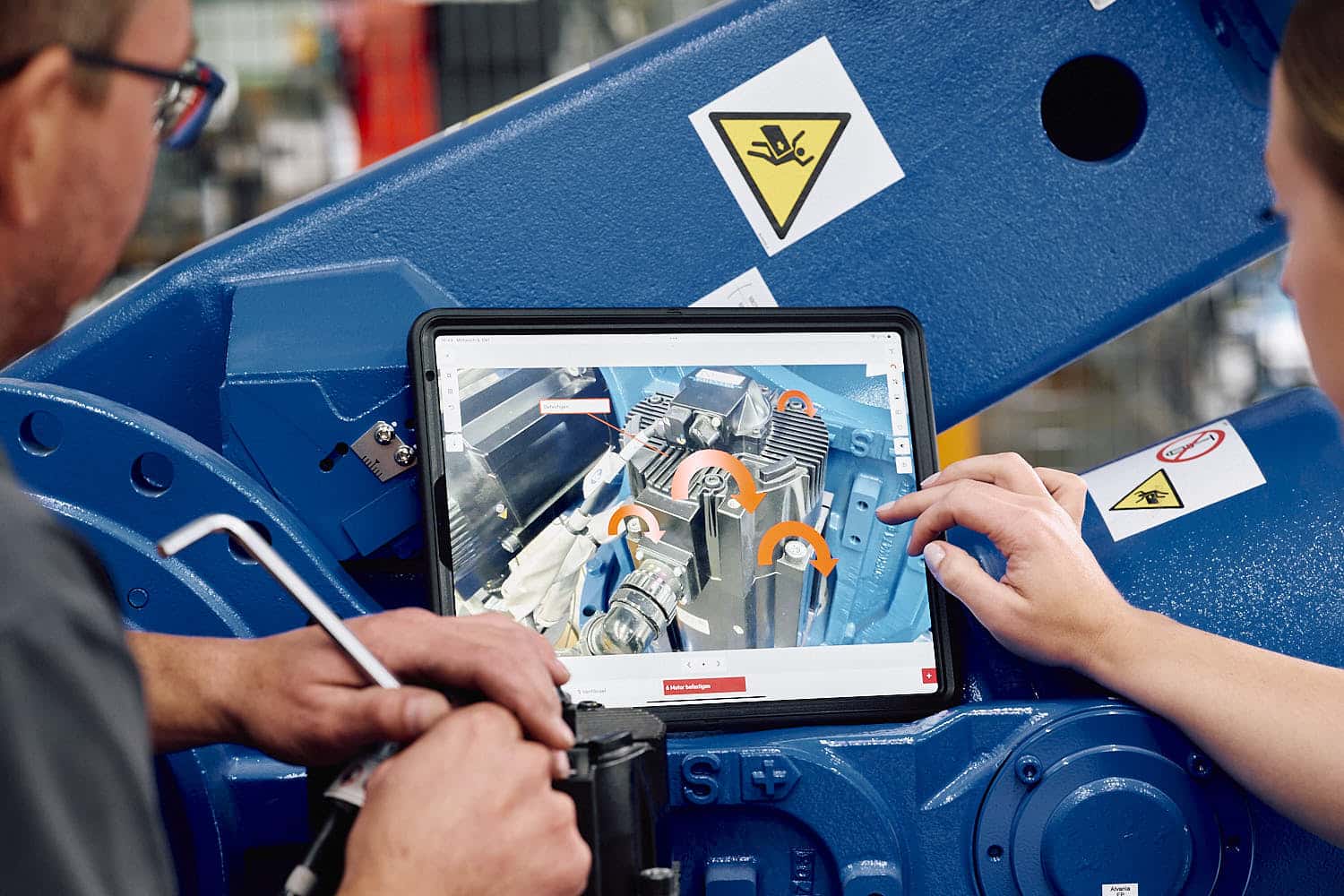Inhaltsübersicht
- 1 The production process (manufacturing process)
- 2 Calculate your savings potential now!
- 2.1 Optimization of manufacturing processes: the basis for better output
- 2.2 No improvement without a challenge: risks when optimizing production processes
- 2.3 On the way to the optimum production process: the individual steps from the initial analysis to the individual production process
- 2.4 Digital support as a strategic advantage in the production process
- 3 Calculate your savings potential now!
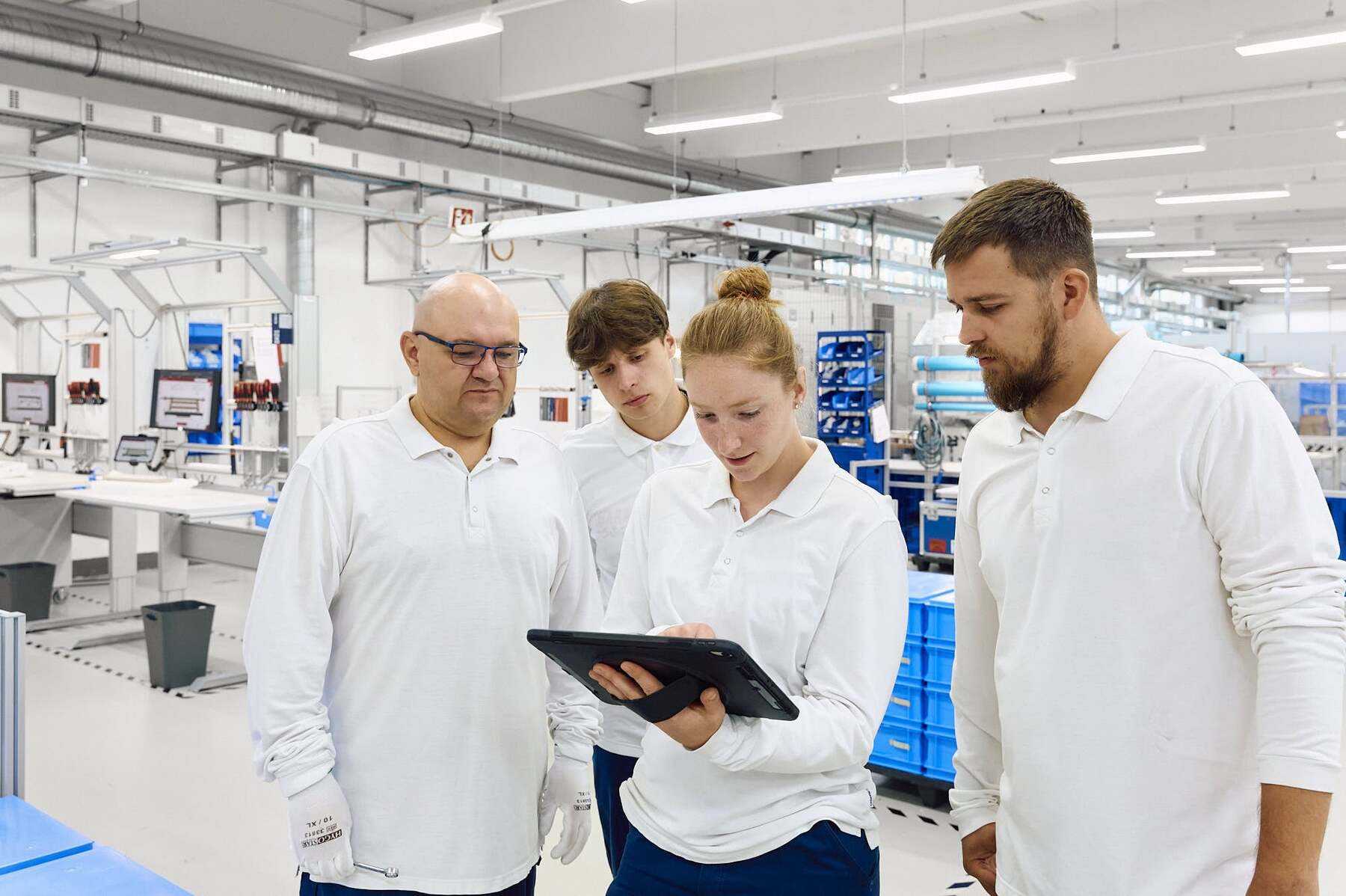
The production process (manufacturing process)
Knowledge of manufacturing processes and their optimization
It is the heart of every company that manufactures physical products: In modern industry, the production process determines the profitability, competitiveness and ultimately the success of a company.
Especially in times of digital change and growing demands on product quality, speed and flexibility in production, an in-depth examination of this topic is becoming increasingly important. As a leader in your company, you are familiar with the challenges associated with planning, controlling and optimizing manufacturing processes.
What are the requirements for the production process in the various sectors, what terminology needs to be taken into account, what strategic steps are feasible and sensible for optimizing your production? We will explore these and other questions below.
The focus here is on the role of digital solutions such as the tepcon “instructor”, our software for digital work instructions, which supports companies in closing interfaces, improving processes and ensuring product quality.
If you already have specific questions about our product – contact our customer service team directly here!
Definition: Manufacturing process, manufacturing and production processes
In common parlance, the terms production process, manufacturing process and production process are often used interchangeably. From a business and technical perspective, however, there are subtle differences that we would like to look at here for the sake of interest.
Production process
The production process is the overarching term. It describes the entirety of all processes involved in the production of goods and services, i.e. the conversion of raw materials, auxiliary materials and operating materials into marketable products. In addition to the actual processing, the production process also includes the planning, organization and control of all activities.
Manufacturing process
The manufacturing process, on the other hand, focuses on the actual implementation of manufacturing within the production process. The focus here is on the physical processing of materials, parts and components. Assembly, the joining of individual parts into assemblies and processing by machines are central elements of process manufacturing.
Manufacturing process
The manufacturing process is another sub-concept that often coincides with the production process, but also includes the chemical and biological conversion of substances (e.g. in the food or pharmaceutical industry). In practice, this term is particularly relevant in process manufacturing.
Production and manufacturing
It is interesting to note that a clear distinction is made in Anglo-American specialist literature between “production” and “manufacturing”. Manufacturing is considered to be a subordinate part of production.
Some German-language specialist publications also follow this differentiation. Nevertheless, the widespread view in German-speaking countries is that both terms and their combinations such as “manufacturing process” and “production process” can largely be used synonymously.
However, it is important to note that the term “production” is not suitable for all types of products and is therefore not used there. In the energy sector in particular – such as gas or electricity generation – the terms “generation” or “production” are used, but not “manufacturing”.
Many terms, one goal
The choice of term therefore depends heavily on the industry, the process used and the specific area of production. However, all technical terms have one thing in common: the efficient and quality-assured creation of products that meet the needs of the market.
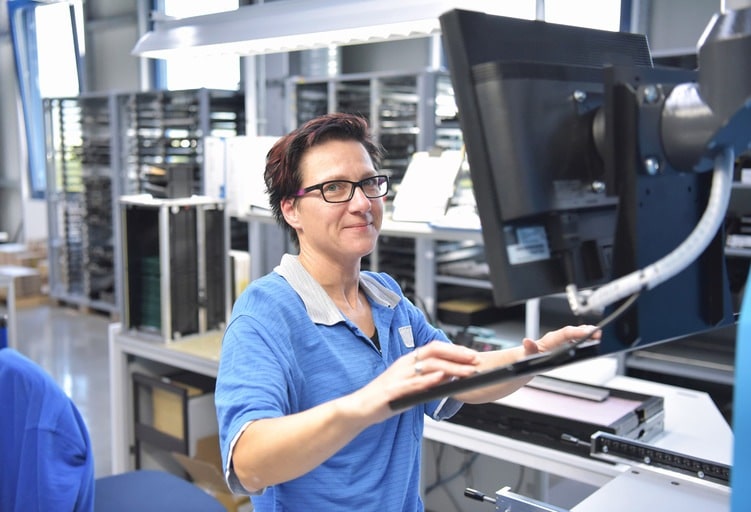
Requirements for the production process in modern industry
The industrial sector is facing a variety of challenges today: Competitive pressure is increasing, innovation cycles are shortening and customers are demanding ever greater individualization of products. Added to this are increasing demands for sustainability, cost-effectiveness and resource efficiency.
Companies must therefore not only master their production, but also continuously question it and adapt it both technically and organizationally.
Also in the details of their processes: Traditional paper-based work instructions can no longer keep up here. They are inflexible, error-prone and make communication between people, machines and digital systems more difficult.
Digital tools such as the “instructor” have long offered decisive advantages: they allow structured documentation, a transparent presentation of the process chain and immediate adaptation to new requirements.
For example, in the assembly of electronics, in complex combination processes or in the manufacture of sensitive intermediate products, the tepcon “instructor” can help to avoid errors and ensure quality.
Calculate your savings potential now!
Optimization of manufacturing processes: the basis for better output
Targeted optimization of your manufacturing processes is not an optional luxury, but a business-critical success factor. Only by constantly improving processes, workflows and cooperation between people and technology can you improve your product quality, avoid waste and increase your added value.
Data-based decisions have long played a central role in this. Modern software solutions enable the analysis of real process data, identify bottlenecks and derive specific measures for process optimization from the data.
Digital support is becoming an indispensable basis for future-proof production processes, particularly in highly regulated or highly complex industries where errors can have a significant impact.
Optimization concerns not only the technical implementation, but also the type of cooperation, the training of specialists and the standardization of processes. The “instructor” supports you in combining these elements and transforming them into an integrated system.
Let us show you the demo version of the “instructors”: There are also possibilities for development in the manufacturing process for production in your company.
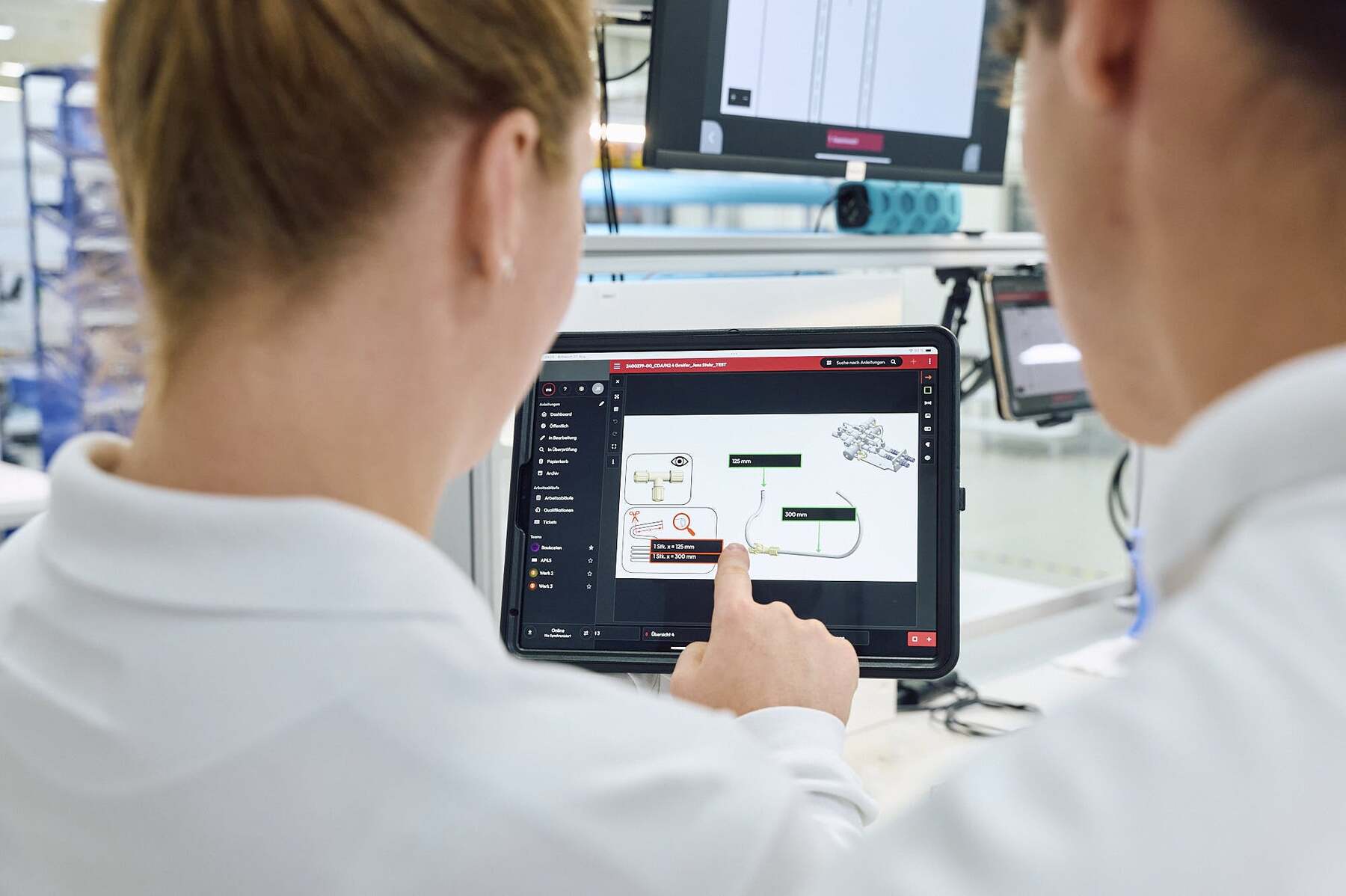
No improvement without a challenge: risks when optimizing production processes
Despite all the potential, the optimization of manufacturing processes is associated with certain risks and challenges.
Changes in the process chain can destabilize existing processes if they are not carefully planned and supported. The introduction of new technologies or digital solutions also requires training and can meet with resistance within the team.
Particularly in areas with highly automated systems or sensitive components, any adjustment can have unwanted effects on product quality and cost-effectiveness.
There is also a risk that processes may not function as planned due to inadequately coordinated interfaces between systems or a lack of data consistency.
Successful process optimization therefore requires a sound understanding of all processes involved, close involvement of all employees and strategically planned, step-by-step implementation – always with a view to long-term performance and sustainable output.
On the way to the optimum production process: the individual steps from the initial analysis to the individual production process
What does the concrete path to an optimized manufacturing process look like? Let’s take a look at the individual steps that are necessary to improve a manufacturing process sustainably and in the long term.
A professionally planned and optimized production process begins with a detailed analysis of the current situation. This involves collecting data, documenting process sequences and identifying weak points. The focus is on recording the materials used, the machines used, the utilization of resources and quality assurance.
The second step is to define the objective: what is to be achieved with the optimization? Possible goals include higher product quality, reducing waste, faster assembly or making production more flexible. On this basis, a plan is drawn up to convert or adapt the existing production process.
In the subsequent implementation phase, the new process may be tested in simulations, adapted and gradually transferred to regular operations. The use of digital work instructions is a key lever here: they enable uniform communication of all steps, avoid misunderstandings and provide interfaces to other IT systems. The “instructor” supports both the technical implementation and the involvement of the workforce.
The introduction is followed by the phase of continuous process optimization: the new production process is monitored using real-time data, deviations are analysed and corrective measures are initiated. The aim is to fully exploit the strengths of the new system and secure long-term competitive advantages.
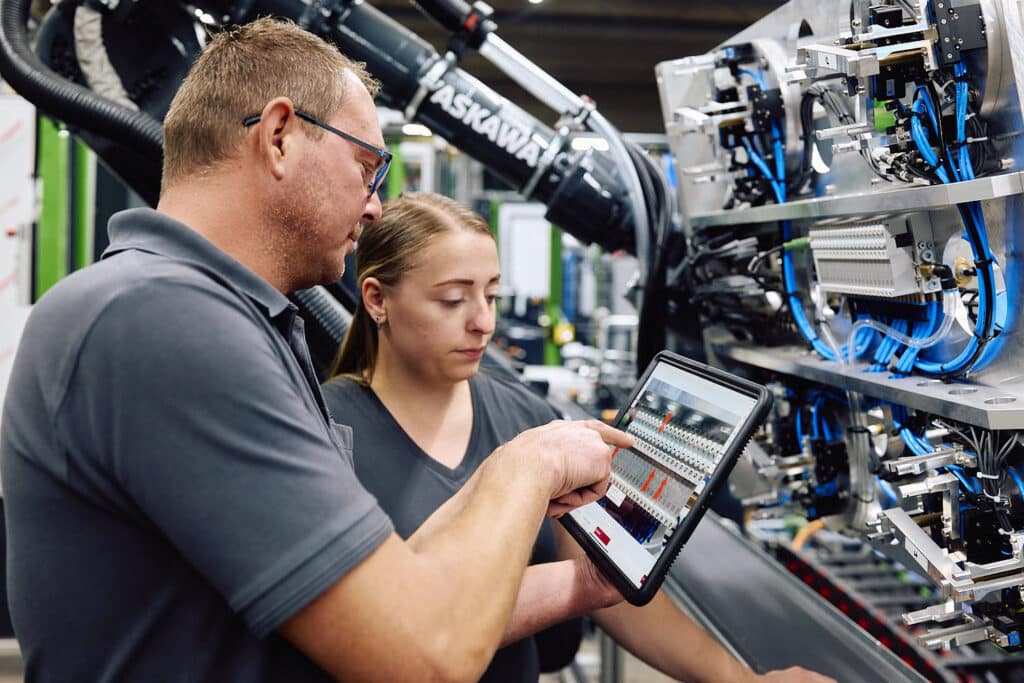
Digital support as a strategic advantage in the production process
In an industry that is changing ever faster, the production process is not a static process, but a strategic competitive advantage. Companies that systematically analyze, improve and digitally support their production processes not only create more efficient workflows, but also increase product quality, reduce costs and gain scope for innovation.
The tepcon “instructor” helps you to make the complexity of your production manageable. You can involve the entire workforce remotely in continuous optimization. Steps taken are documented and can be accessed at any time by anyone who needs them. From the assembly of mechanical components to the processing of sensitive electronics and the planning of individual solutions: The “instructor” offers a system for a wide range of areas that grows with your requirements.
Another decisive advantage of the tepcon "instructor" is its active support in error detection and rectification.
Thanks to the integrated if-then logic, the software can make specific queries in digital forms as soon as an error is logged. Depending on the input, additional check steps are automatically shown or hidden so that only relevant measures are displayed. This saves time and significantly reduces complexity for your employees.
In addition, the integrated ticket system enables the seamless recording of errors, the automatic notification of all persons involved and the systematic tracking of changes made. This not only identifies causes, but also makes the effectiveness of measures measurable – an important contribution to sustainable quality assurance.
Use the potential of digital work instructions, documentation and worker guidance as a basis for higher quality, reliable processes and cost-effective production.
How do you actually establish the “instructor” in your production? We’ll be happy to explain – book your info call here.
Calculate your savings potential now!
FAQ on the production and manufacturing process
Our FAQs give you a comprehensive overview of the most important terms, correlations and challenges relating to the optimization of your manufacturing and production processes. If you want to make your production future-proof, a well thought-out concept – supported by the tepcon “instructor” – is the key to success.
The manufacturing process is a central part of the overall production process and describes the concrete implementation of the manufacture of physical products. It includes all procedures with which raw, auxiliary and operating materials are converted into marketable goods. The goal: a finished product of defined quality, produced efficiently and economically.
Typical stages of a production process include the preparation and provision of materials, processing by machines, the assembly of components and the final quality control. Both traditional and modern technologies are used – depending on the area, the quantity of goods, the available resources and the chosen production framework.
In practice, manufacturing processes are closely interlinked with logistics, materials management and production planning. Smooth integration of all process participants – people, machines, systems – is crucial for a functioning production operation.
Production process optimization is a comprehensive approach to improving the entire production process. In contrast to purely technical production optimization, it considers all processes that are necessary to manufacture a product – from development and material provision to final testing.
The aim is to increase production efficiency while reducing costs, rejects and waste.
The following steps are frequently used as part of production process optimization:
improving the interfaces between departments,
better use of data and analysis tools,
the integration of new technologies such as predictive maintenance or simulation,
the targeted use of digitalization for better management and control.
Software solutions such as the “instructor” provide important support here by bundling information, making processes transparent and enabling quick adjustments.
Production process optimization is therefore a strategic lever for greater competitiveness and a long-term increase in efficiency.
Successful optimization of the production process requires a structured approach based on sound data. The first step is to analyze the existing process steps, for example with the help of the “instructor”, which integrates digital work instructions, real-time monitoring and process analysis. Critical points are identified here – for example bottlenecks, sources of error or waste of materials and time.
In the next step, we identify potential for improvement: Are there processes that can be automated? Are machines or systems underutilized? Are all available production factors being used optimally?
The aim is to increase quality, shorten throughput times and use resources efficiently.
Staff involvement is also a decisive factor: training, transparency and feedback help to implement changes effectively and sustainably.
Last but not least, all procedures should be standardized, documented and reviewed at regular intervals – ideally through data-based decisions.
Materials, whether raw, processed or refined, form the basis of every product. Their selection, quality and availability have a significant influence on the entire manufacturing process. Not only do technical properties have to be taken into account, but also aspects such as availability, sustainability and costs.
Components and assemblies, which often consist of different parts, must be assembled in the correct sequence and with exact specifications. The use of modern machines and precise control systems is essential here. Especially in sensitive areas such as electronics, exact coordination with the overall process is crucial.
High material efficiency not only reduces the consumption of raw materials and auxiliary materials, but also the environmental impact – and at the same time increases the economic efficiency of production. Ideally, material logistics, warehousing and production planning are fully coordinated and networked with digital systems.
Modern manufacturing is highly complex – not only because of the large number of processes and technologies, but also because of the enormous amounts of data that are generated along the entire process chain. Without digital tools, it is almost impossible to maintain an overview and control.
Software solutions offer companies valuable benefits: they enable the central management of work instructions, ensure standardization in execution and create transparency across all process steps. For example, assembly plans, machine settings and test specifications can be digitally recorded, adapted and shared.
Digital systems also improve communication between departments, simplify the integration of new employees and speed up responses to disruptions or deviations. In combination with increasing automation, there is enormous potential for efficiency and quality.



